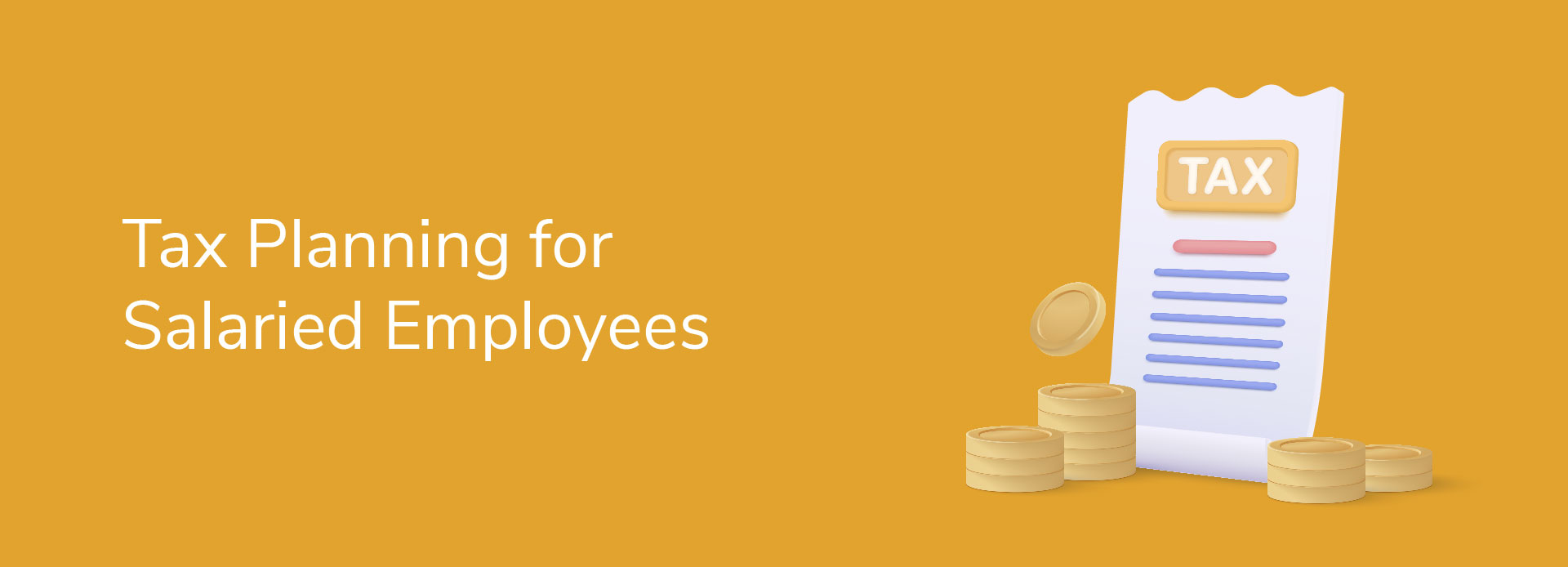
Tax Planning for Salaried Employees
27 May 2024 | By INDIE
This article is about maximising your take-home pay and is a simple guide to tax planning for salaried employees. Going through the hassles of tax planning can be a headache, especially for salaried individuals. Watching your hard-earned income diminish under the weight of heavy taxation is frustrating.
However, with some strategic planning, it is very much possible to optimise some tax-saver strategies and take home a larger portion of your pay. Opening a bank account that you use specifically to receive your salary is recommended. This helps keep your salary and other transactions separate. Understand your salary slip to unlock potential savings and take control of your financial future.
Understanding Your Salary Components
Look at your salary slip as a roadmap to tax efficiency and not just a breakdown of your earnings. The main components of your salary such as basic pay, allowances like House Rent Allowance (HRA), conveyance and Leave Travel Conveyance (LTA), and deductions like Income Tax, Professional Tax, and Provident Fund offer valuable insights into potential tax-saving opportunities.
1. Study Your Salary Slip
Closely examine your salary slip. Basic pay is subject to income tax, but certain allowances like HRA are exempt from taxation under specific conditions. Make the best use of these exemptions to reduce the tax liability.
2. Leverage Section 80C of the Income Tax Act, 1961
Section 80C, The Income Tax Act, 1961, has a plethora of avenues for tax-saving investments. You can choose from a variety of instruments like Equity Linked Savings Scheme (ELSS), Public Provident Fund (PPF), National Savings Certificate (NSC), and a 5-year Bank Fixed Deposit (FD). Invest in such instruments up to 1.5 lakhs to maximise your take-home pay.
Some of these investment options come with a minimum lock-in period, so be sure to check that before you put your money in them. The most suitable option depends on factors like your risk appetite and the willingness and ability to hold the investment at least for the full duration of the lock-in period.
Also Read: Tax saving FD for Section 80C deductions
3. Don’t Procrastinate
Avoid procrastination for effective tax planning. Last-minute scrambling means hasty investment decisions and missed opportunities for better tax planning. A proactive approach would be to spread out investments throughout the year, making your way through financial burdens and maximising returns.
4. Align Investments with Financial Goals
Tax-saver investments need not be different from your financial goals. You can enjoy double benefits at one go—tax savings and wealth accumulation. For instance, you can align your investments with specific goals, such as buying a car or funding your child’s higher education. You may consider opening another bank account for investments and personal expenses—you can open a bank account with just a few clicks online.
5. Explore Other Tax-Saver Sections
While it is always recommended to leverage Section 80C of the Income Tax Act 1961, don't miss the other sections that offer tax benefits as well. Check the investment declaration form given by your employer for tax-saving options for salaried individuals. Here are a few tax-saver avenues:
- Leave Travel Allowance (LTA): Submit proof of travel and claim deductions once every two years.
- Section 80D, The Income Tax Act 1961: Claim tax benefits on health insurance premiums.
- Section 80E, The Income Tax Act 1961: Avail tax benefits on education loan interest payments.
Tax planning for salaried employees has two main aspects: maximising the take-home salary and achieving financial goals. An employee can navigate the tax landscape with confidence by leveraging insights from their salary slip, availing the benefits of Section 80C of the Income Tax Act 1961, and checking out other tax-saving avenues.
Tax planning for salaried individuals requires tailored strategies based on individual financial situations and goals. Plan early at the onset of the financial year to make the most of tax-friendly investments and get maximum returns. Stay informed and review your investment portfolio periodically to capitalise on opportunities.
Disclaimer: The information provided in this article is generic and for informational purposes only. It is not a substitute for specific advice in your circumstances. Hence, you are advised to consult your financial advisor before making any financial decision. IndusInd Bank Limited (IBL) does not influence the views of the author in any way. IBL and the author shall not be responsible for any direct/indirect loss or liability incurred by the reader for making any financial decisions based on the contents and information.





